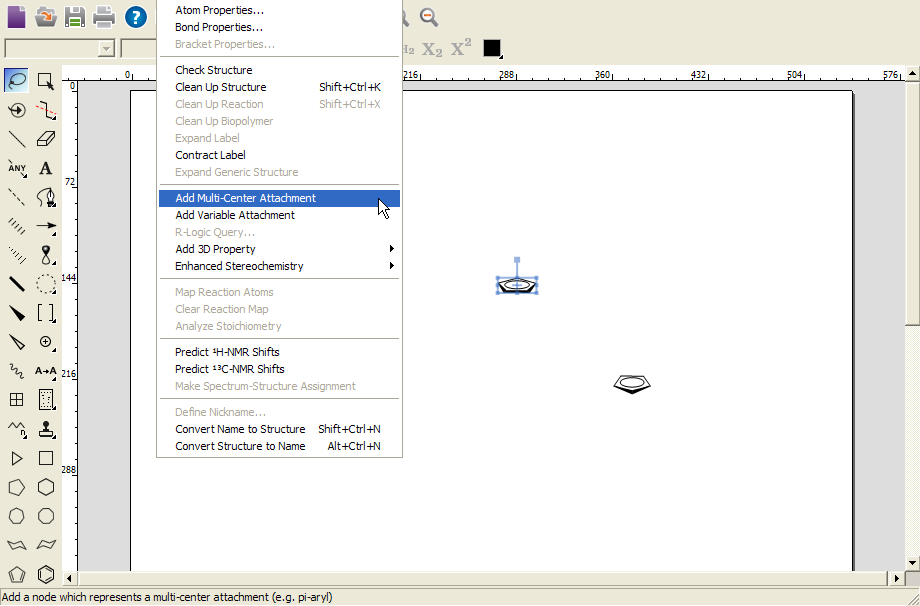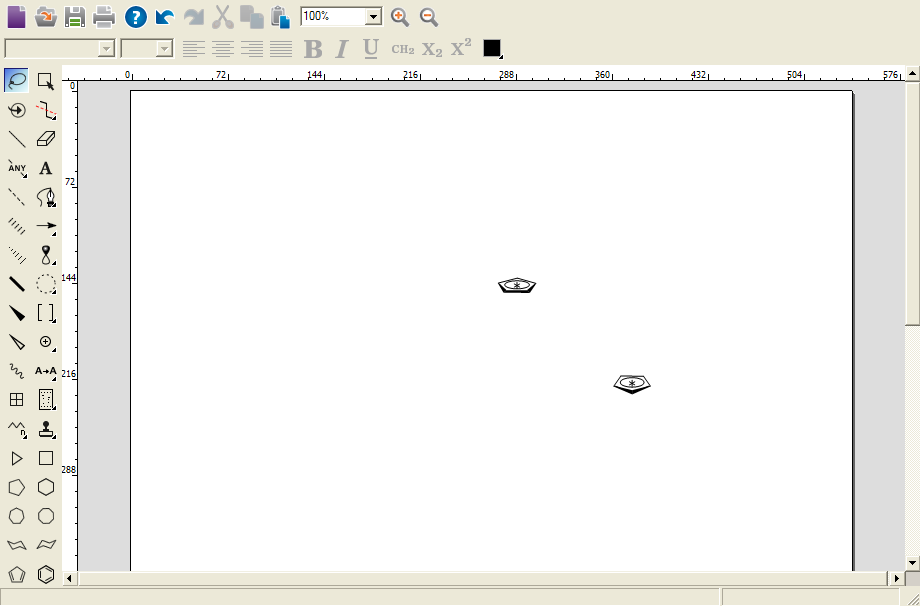In the first step, separately draw the individual ring structures. ChemDraw comes with an template library of predrawn structures, including some suitable cylopentadienylcyclopentadienyl rings.
You can place the ring structures anywhere in your document.
Select one ring structure. On the Structure menu, click Add Multi-Center Attachment. This adds a multi-center node as attachment point to the structure.
Repeat this process for the other ring structure. Asterisks indicate the created multi-center nodes.
You can use the multi-center attachment points to draw the coordination bonds. Note that bonds connecting to delocalized systems should be drawn as plain bonds; it is not acceptable to use dashed bonds. When one bond crosses another, if necessary, you can click Bring to Front or SentSend to Back on the Object menu to indicate which bond is in front. The bond which is behind will have a small section cut out.
Click to select the end (i.e. the terminal atom) of the coordination bond in one structure, and then shift+click to select the end of the coordination bond in the second structure. On the Object menu, click Join.
The two structures are joined so that they share an atom. Note that the second structure is moved accordingly.
Finally, you can add any substituents as required.
(Also note that for unsubstituted ferrocene in the gas phase, the cylopentadienylcyclopentadienyl rings are actually eclipsed.)







